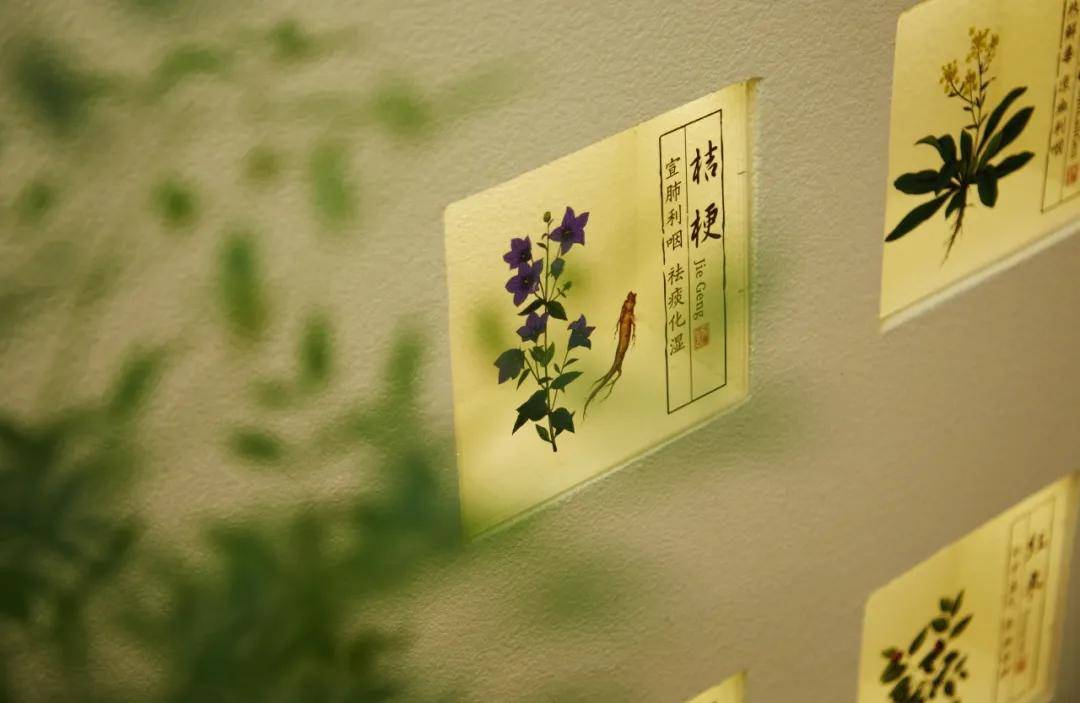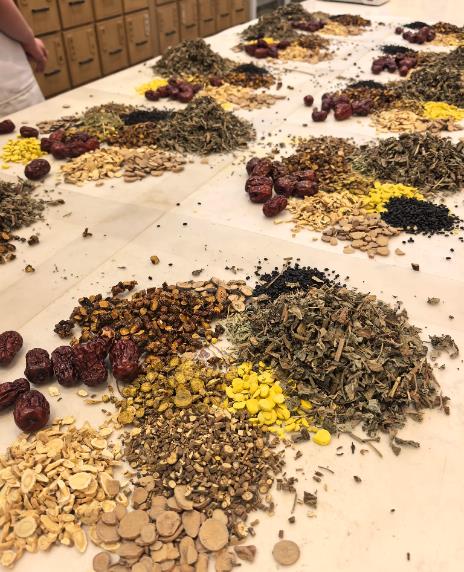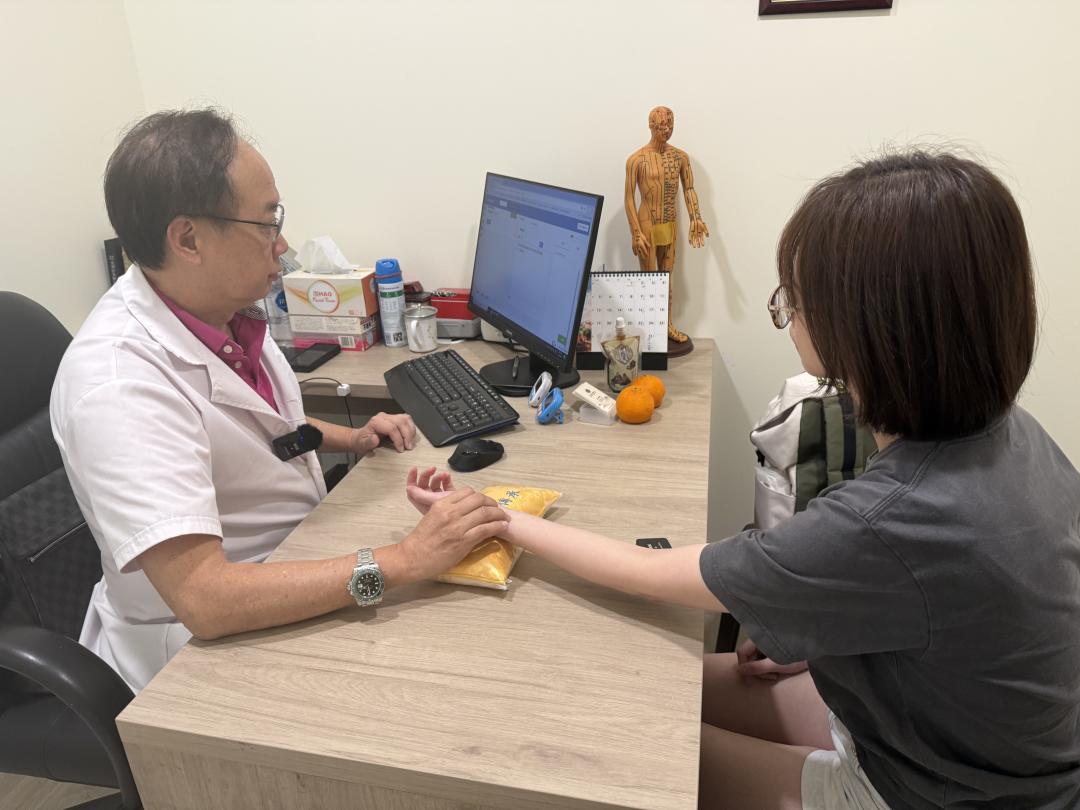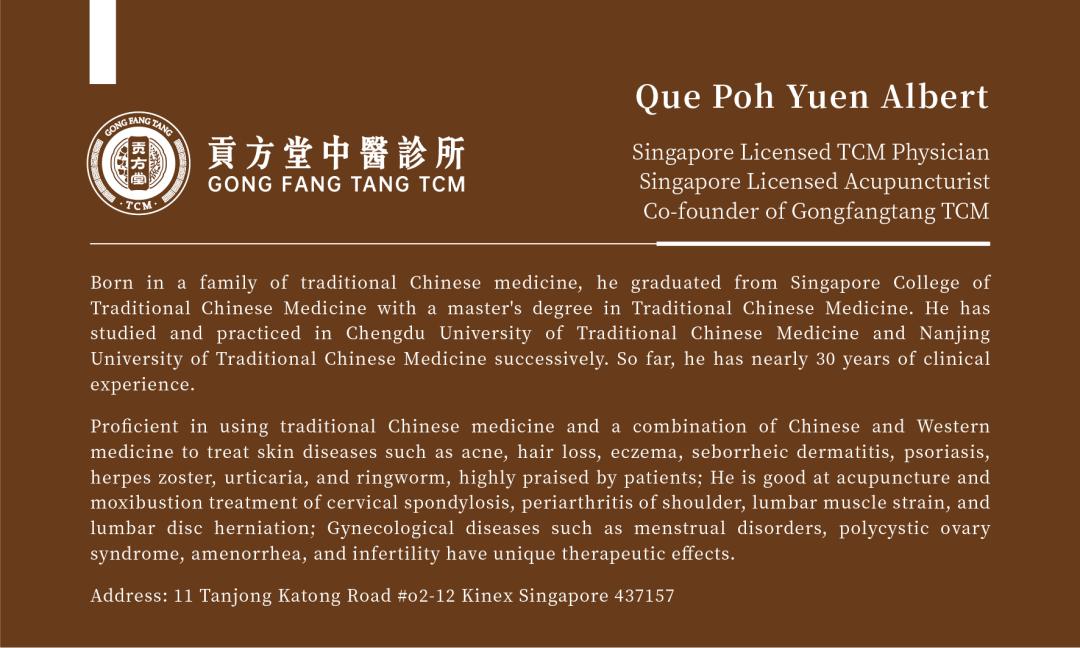Menstruation that should arrive on time is absent for 3 consecutive menstrual cycles or more, that is amenorrhea. Amenorrhea is not only related to fertility, but also an alarm signal from the body! Does Traditional Chinese Medicine (TCM) have effective proven formulas for treating amenorrhea?

What causes amenorrhea?
Dr. Que Poh Yuen Albert , a TCM gynecology expert at Singapore Gong Fang Tang TCM, explains that the production of menstruation relies on the coordination of the "kidney qi - tian gui - thoroughfare and conception vessels - uterus" axis and sufficient nourishment by qi and blood. Common core pathological mechanisms of amenorrhea are:
Kidney Deficiency and Essence Depletion: Congenital insufficiency or postnatal depletion (staying up late, sexual overexertion, chronic illness) leading to kidney essence deficiency, unable to transform and generate menstrual blood.
Qi and Blood Deficiency: Spleen and stomach weakness (dieting, excessive contemplation) or excessive blood loss, leading to no source for the production of qi and blood, resulting in an empty "sea of blood".
Phlegm-Dampness Obstruction: Spleen deficiency leading to dysfunction in transportation and transformation, internal stagnation of water-dampness forming phlegm, blocking the thoroughfare and conception vessels and uterine collaterals (especially aggravated by Singapore's hot and humid climate).
Qi Stagnation and Blood Stasis: Emotional depression (liver qi stagnation), internal invasion of cold pathogens (craving cold drinks, exposure to cold), leading to inhibited qi movement, internal blood stasis, and blockage of the menstrual passage.
Cold Congealing and Blood Stasis (Core Indication for Wen Jing Tang): Yang deficiency with internal cold, or external cold pathogens lodging in the uterus. Cold congealing leads to blood stasis, preventing menstrual blood from descending.
What are the symptoms of amenorrhea?
Besides the cessation of menstrual flow, other physical changes may accompany it. For example, those with qi and blood deficiency may experience pale or sallow complexion, dizziness, blurred vision, fatigue, and lack of energy. Those with qi stagnation and blood stasis often have distending pain in the chest, flanks, and breasts, along with depressive moods. Those with cold congealing and blood stasis mostly experience cold pain in the lower abdomen that lessens with warmth. Liver and kidney deficiency may manifest as soreness and weakness in the lower back and knees, tinnitus, and blurred vision.

How does TCM effectively treat amenorrhea?
For clinically common types of amenorrhea due to cold congealing and blood stasis or deficiency-cold in the thoroughfare and conception vessels complicated by blood stasis, Dr. Que Poh Yuen Albert particularly recommends the renowned formula Wen Jing Tang (Channel-Warming Decoction) from Zhang Zhongjing's "Jin Gui Yao Lue" (Essential Prescriptions from the Golden Cabinet). This formula is hailed as the "Number One Formula for Regulating Menstruation in Gynecology." Its brilliance lies in the combined effects of "warming," "unblocking," and "tonifying." By regulating the thoroughfare and conception vessels, warming the channels to dispel cold, nourishing blood, and dispelling stasis, it restores the body's yin-yang balance and promotes the normal circulation of qi and blood.
The formula uses Wuzhuyu/Evodia fruit (Wuzhuyu) and Guizhi/Cinnamon twig (Guizhi) to warm the channels, dispel cold, and unblock the blood vessels. Danggui/Chinese Angelica (Danggui), Chuanxiong/Chuanxiong rhizome (Chuanxiong), and Shaoyao/White Peony root (Shaoyao) activate blood circulation to dispel stasis, nourish blood, and regulate menstruation. Renshen/Ginseng (Renshen), Gancao/licorice root (Gancao), Shengjiang/fresh ginger (Shengjiang), and Banxia/Pinellia tuber (Banxia) boost qi and harmonize the middle jiao to support the source of transformation and production. Ejiao/Donkey-hide gelatin (Ejiao), Maidong/Ophiopogon root (Maidong), and Mudanpi/Tree Peony root bark (Mudanpi) nourish blood, stop bleeding, nourish yin, and moisten dryness. Used together, these herbs disperse cold, resolve stasis, move blood, and regulate menstruation.
Key Points of Dr. Que's Clinical Application:
When applying Wen Jing Tang in Singapore's hot and humid environment, Dr. Qiu often makes flexible additions and subtractions based on the patient's constitution:
For those with significant dampness: Appropriately add Fuling/Poria (Fuling) and Cangzhi/Atractylodes rhizome (Cangzhu) to strengthen the spleen and transform dampness.
For obvious blood stasis: Add Yimucao/Motherwort herb (Yimucao) and Taoren/Peach kernel (Taoren) to enhance blood-activating and menstruation-unblocking effects.
For those complicated by liver qi stagnation: Add Xiangfu/Nutgrass rhizome (Xiangfu) and Chaihu/Bupleurum root (Chaihu) to soothe the liver and regulate qi.
For severe kidney yang deficiency: Add Yinyanghuo/Epimedium herb (Yinyanghuo) and Bajitian/Morinda root (Bajitian) to warm and supplement kidney yang.

Medical Case
Patient: Ms. Lin, 32 years old.
Chief Complaint: Amenorrhea for 8 months. Previous menstruation was regular. 8 months ago, due to immense work pressure, coupled with craving cold drinks (iced coffee) and constant exposure to air-conditioned rooms, her menstrual flow gradually decreased until it stopped completely. Accompanied by cold pain in the lower abdomen, soreness and weakness in the lower back and knees, aversion to cold and cold limbs, low libido, and pale complexion.
Consultation with Dr. Que Poh Yuen Albert :
Examination: Tongue pale and dusky, thin white coating. Pulse deep, thready, and choppy.
Pattern Differentiation: Deficiency-cold in the thoroughfare and conception vessels, cold congealing and blood stasis.
Treatment Principle: Warm the channels to dispel cold, nourish blood and activate blood circulation, regulate and supplement the thoroughfare and conception vessels.
Prescription: Modified Wen Jing Tang.
Formula: Wuzhuyu 6g, Guizhi 9g, Danggui/Angelica 12g, Chuanxiong 9g, Baishao/White Peony root 15g, Dangshen/Codonopsis root 15g, Ejiao/Donkey-hide gelatin 9g (melted), Mudanpi/Moutan bark 9g, Shengjiang/fresh ginger 3 slices, Maidong/Ophiopogon root 12g, Zhigancao/prepared licorice root 6g. Added Aiye/Artemisiae argyi folium 6g (to enhance uterine warming), Yimucao/Motherwort 20g (to activate blood and unblock menstruation).
Medical Advice: Stop cold drinks and food, pay attention to keeping the abdomen warm, regulate emotions. Return weekly for prescription adjustments.
Result: After taking the medicine for 2 weeks, she felt reduced aversion to cold and cold pain in the lower abdomen. In the 5th week of taking the medicine, menstruation started! The flow was moderate to slightly scanty, dark red in color, with small clots, and mild distending pain in the lower abdomen but tolerable. After continuous treatment for 2 more menstrual cycles, the menstrual cycle resumed to 28-32 days, with the flow and color basically normal. Symptoms like aversion to cold and cold limbs disappeared.
